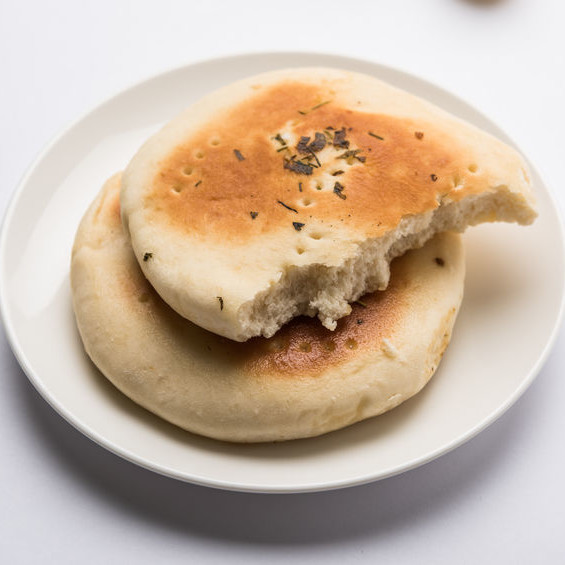
Maida Flour
What is Maida Flour?
Maida is a finely-milled, white wheat flour commonly used in India. It is obtained from the endosperm part of the wheat grain and can be made from winter- or summer-wheat varieties.
Although not the exact equivalent of U.S. all-purpose flour, maida is often labeled a multi-purpose flour and is very similar to U.S. cake flour. It is bleached either under normal ambient oxidation conditions or with common bleaching agents.
Maida flour is very popular in India, Pakistan and other Central Asian and South Asian countries. It is used in preparing breads and baked goods, noodles and other food products. Current regulations in India require fortifying the flour with iron, zinc, vitamin A, folic acid and other B-vitamins.
Origin
Maida flour is most commonly used in India, especially the Southern part of the country as well as in Pakistan. It is one of three types of flour commonly used in Indian baking; the other two are Atta and sooji (suji):1
- Maida: used in making bakery products such as pastries, sweets, as well as traditional breads such as paratha and naan
- Atta: used in making flatbreads, such as chapati, roti, naan and puri
- Sooji/suji: used in making pasta, breakfast cereals, puddings, and couscous
Function
Maida flour is low in protein (gluten), an advantage for producing high-volume, soft/tender cakes with fine grain. Its high extensibility and stretchability are desirable qualities for a variety of Indian pastries and baked goods.
Production
Modern Indian wheat flours are generally made using roller mills, known as ‘chakkis.’
Clean wheat is conditioned and cracked to separate the endosperm from the bran. Milling is done in four or five stages resulting in different composition and particle sizes; subsequent sorting produces whole meal (atta) and semolina-type (suji/sooji) flours and further milling and sifting through 600 mesh and bleaching results in maida flour.
Within these types, there are finer divisions such as high gluten, medium and low gluten flours.
Nutrition
Maida flour is low in protein and fiber due to bran removal during milling.
Typical composition of maida flour:2
| Flour | Protein (%) | Carbohydrate (%) | Fat (%) | Moisture (%) | Fiber (%) |
| Maida | 10.62 | 76.61 | 0.86 | 10.9 | 0.35 |
There has been a controversy regarding bleaching maida flours with alloxan, a substance banned by the Food Safety and Standards Authority of India (FSSAI). The chemical is a beta-cell killer and can cause diabetes in humans.3
Application
Maida is used extensively in Central Asian and Southeast Asian cuisine. It is mainly used in making flat breads such as naan, tandoori roti, pizza crust, noodles, bhatoori (a fluffy, deep fried, leavened bread), cakes, biscuits and many other pastries. In addition to bakery products, it is used as a fermented batter (jilebi),4 as a sauce thickener and in coating fried food products.5
Regulations
Being an Indian ingredient, maida is governed by the Food Safety and Standards Authority of India (FSSAI) which regulates its safety and nutrients fortification levels.6
References
- Kumar, C., Mythily, C.S., Venkatachalapathy, R. and Chandraju, S. Bio-mimic conversion of Maida (polysaccharides) to reducing sugars by acid hydrolysis and its estimation using standard methods. Int. Food Res. J., 2014, 21, 2, pp: 523-526.
- Dutta, A., Tilara, S., Jantwal, C. and Khan, R. Quality evaluation of differently processed wheat flour. Asian J. dairy and Food Res., 2018, 37, 1, pp: 61-64.
- Oak, P. 2016. http://www.fnbnews.com/Top-News/most-maida-dangerous-as-diabetes-causing-chemicals-used-for-processing-38957. Last accessed, November 30, 2018.
- Chakkaravarthi, A., Punil Kumar, H.N. and Bhattacharaya, S. Jilebi 2: flowability, pourability and pH of batter affected by fermentation. J. Food Sci Technol. 2013, 50, 2, pp.293-300.
- Dubat, A. optimising quality assessment of Indian wheat flour for Atta and Maida products. Proceedings of 1st ICC India Grains Conference, in partnership with ICRISAT (J.W. van der Kemp and J.R.N. Taylor, Eds,). Quality assurance and Safety of Crops, 2012, 4, 3: p. 153.
- Food Safety and Standards Authority of India, FSSAI (fortification of foods) Regulation 2016. https://extranet.who.int/nutrition/gina/sites/default/files/IND%202016%20FSSAI%20fortification%20regulation_4.pdf. Last accessed December 1, 2018.

